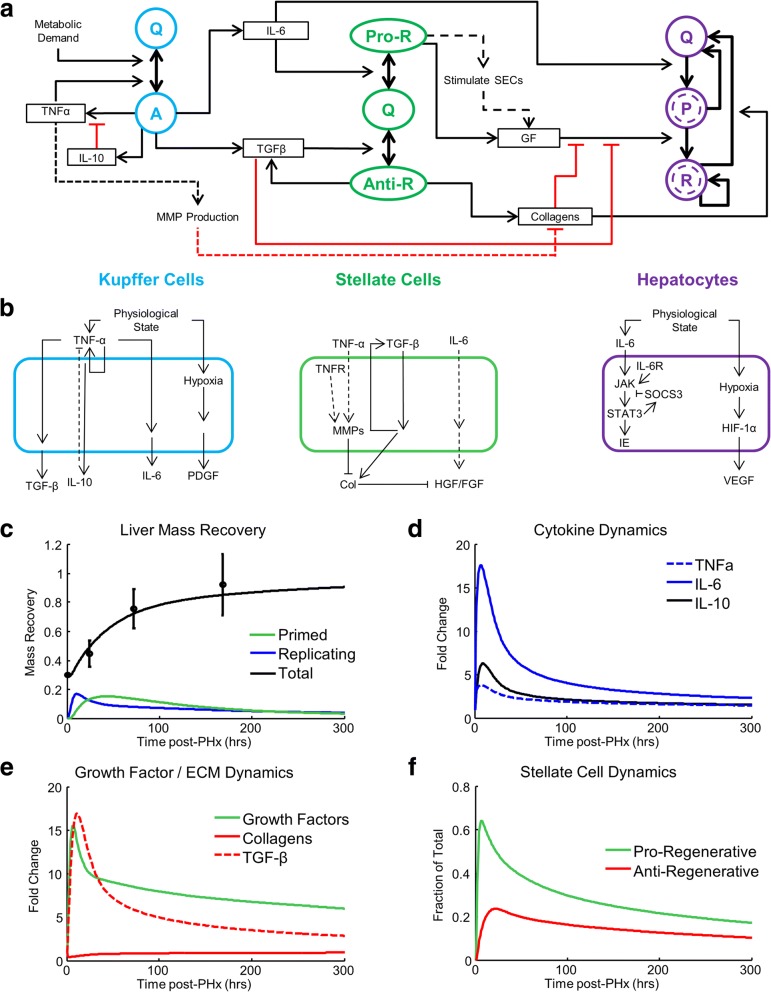Fig. 1.
Cell network model of non-parenchymal cell activation contributing to liver regeneration. a Complete network diagram showing cell states, transitions among states, and molecules promoting or inhibiting cell transitions. Kupffer cell states are distributed between Quiescent (Q) and Active (a) states. Stellate cell states are distributed between Quiescent (Q), Pro-regenerative (Pro-R), and Anti-regenerative (Anti-R) states. Hepatocyte states are distributed between Quiescent (Q), Primed (P), and Replicating (R) states. b Cell signaling models showing a schematic representation of molecular interactions occurring within each cell type considered. Solid lines represent directed signaling; dashed lines represent indirect effects. c Simulated liver mass recovery profiles compared to the experimental data from [36]. d Simulated cytokine dynamics following resection. e Simulated dynamics of growth factors and collagens following resection. f Simulated profiles of HSC state dynamics following resection. Definition of additional terms: TNFα = tumor necrosis factor α, IL-10 = interleukin 10, IL-6 = interleukin 6, TGFβ = transforming growth factor β, MMP = matrix metalloproteases, GF = growth factors, PDGF = platelet derived growth factor, TNFR = TNF receptor, HGF = hepatocyte growth factor, FGF = fibroblast growth factor, IL-6R = IL-6 receptor, JAK = Janus kinase, STAT3 = signal transducer and activator of transcription 3, SOCS3 = suppressor of cytokine signaling 3, IE = immediate early genes, HIF-1α = hypoxia inducible factor 1α, VEGF = vascular endothelial growth factor, and SEC = sinusoidal endothelial cells

